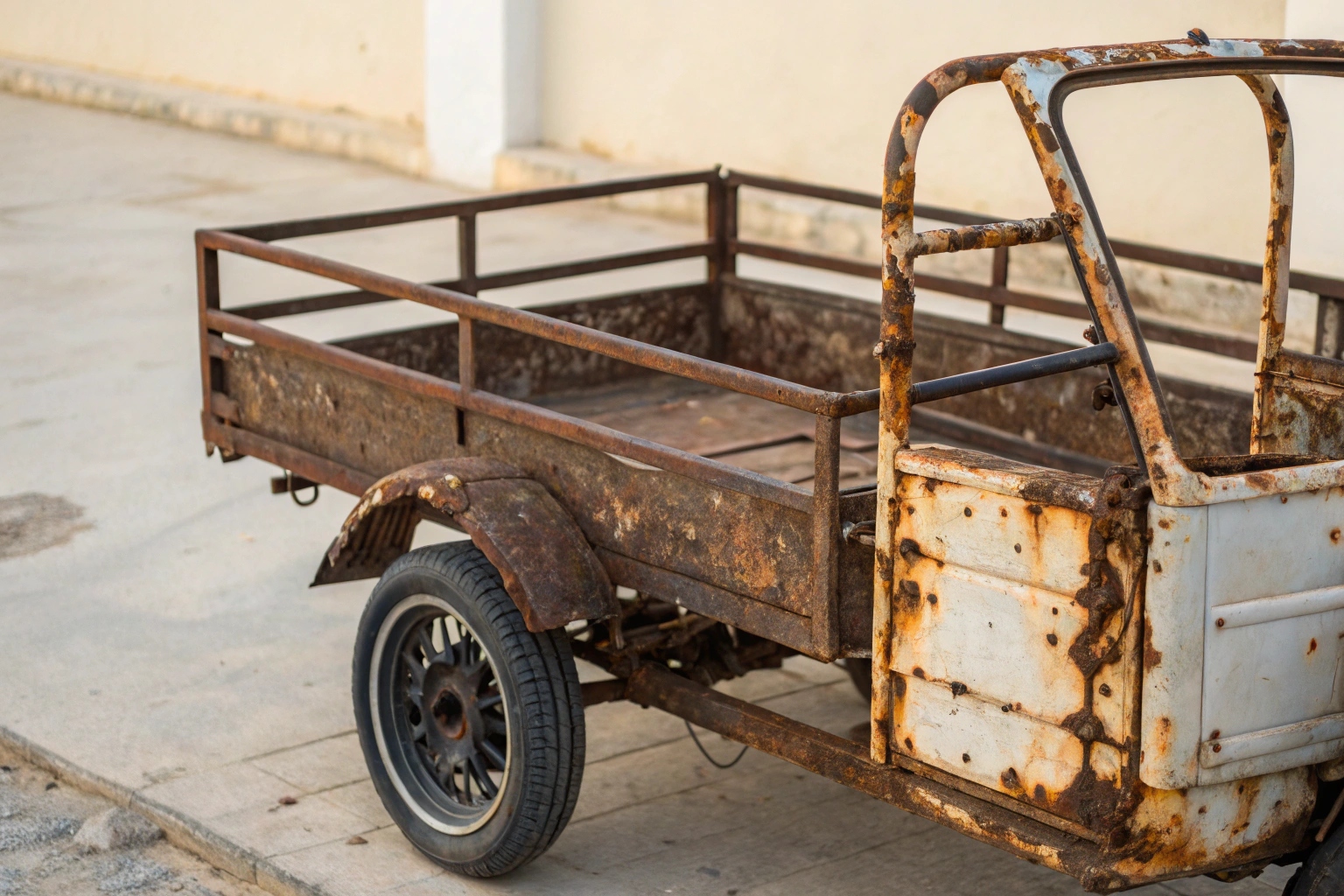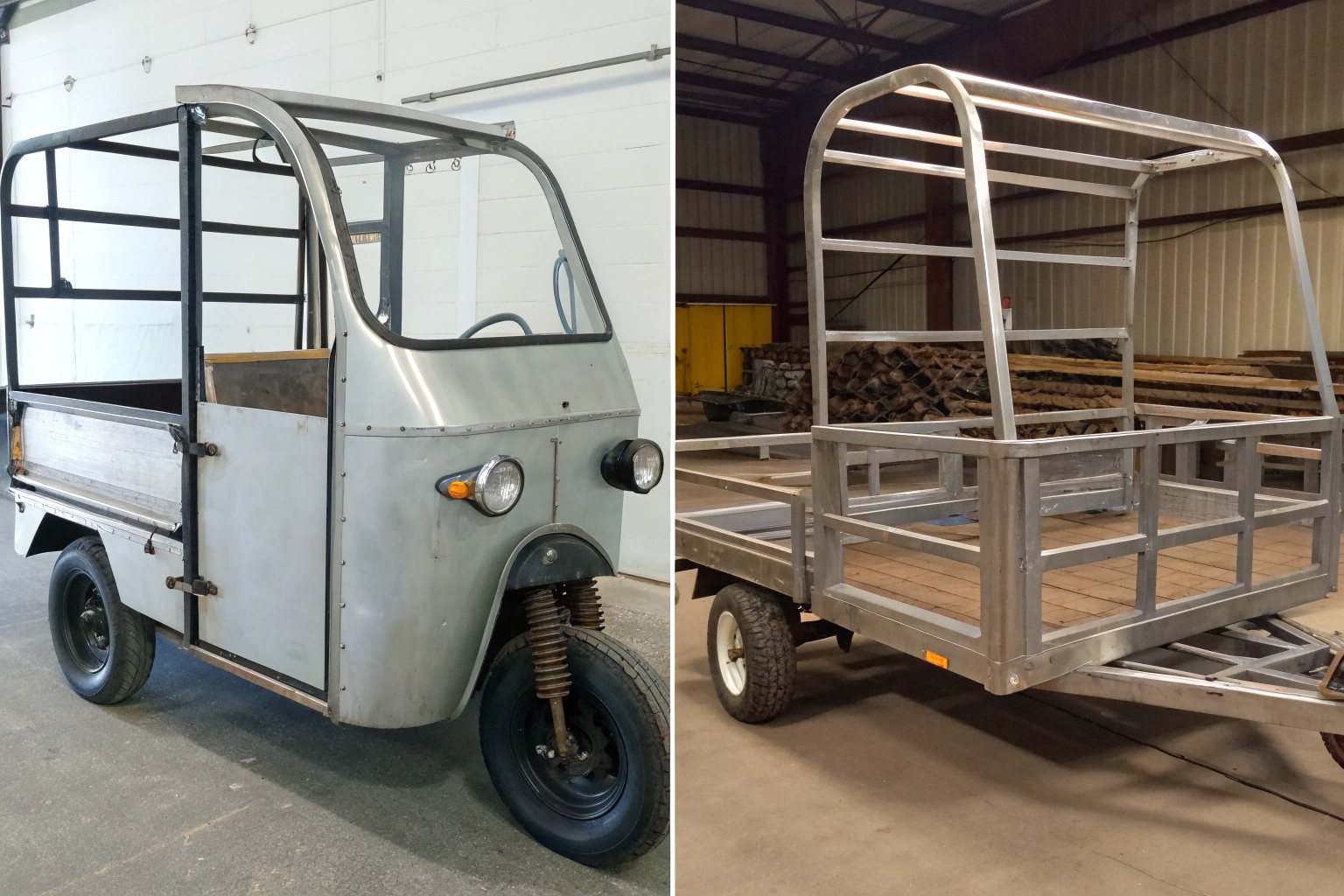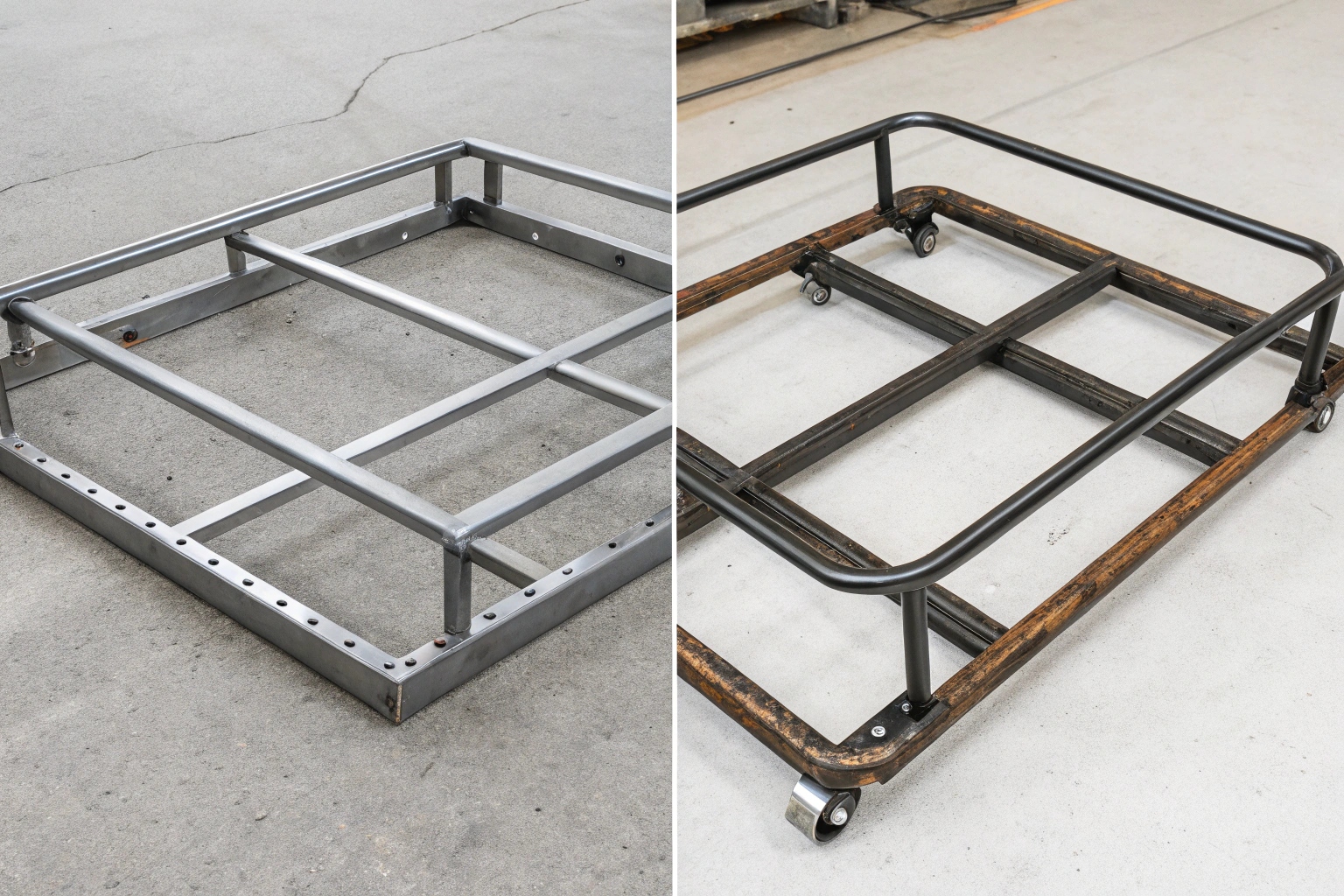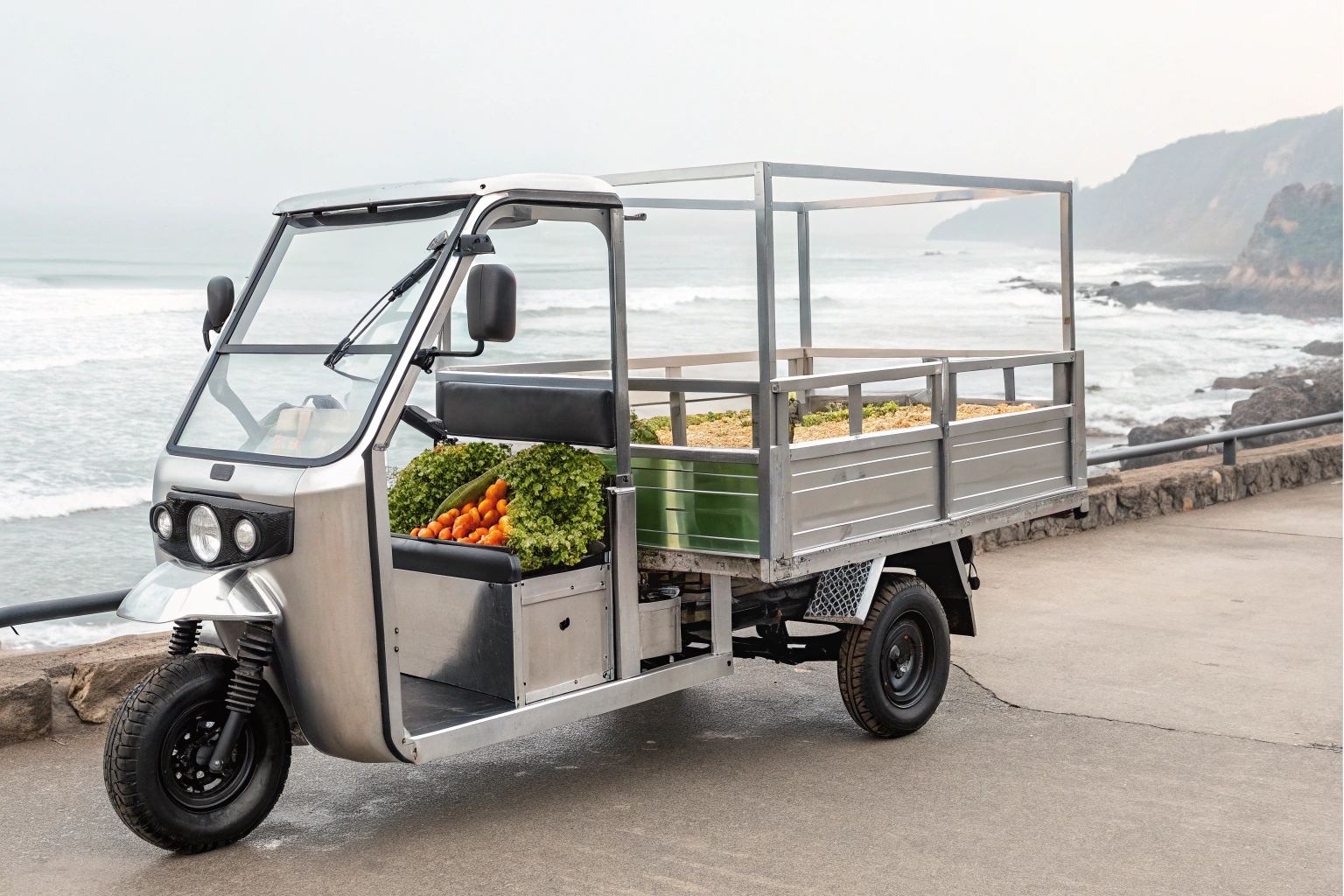Your tricycle's frames are covered in rust after just one year. This looks unprofessional, signals poor quality to your customers, and hides a dangerous secret: a weakening structure that could fail.
For long-term durability and a lower total cost, a 201 stainless steel frame is the superior choice over a standard iron frame. While iron is cheaper initially, stainless steel's rust-proof nature prevents decay, ensuring safety and a longer lifespan, especially in humid climates.

When clients ask me about customizing their electric cargo tricycles, the conversation always comes to the frame. The choice between a standard painted iron (carbon steel) frame and a stainless steel one seems simple, but it's one of the most important decisions you'll make. The frame is the skeleton of your tricycle. If the skeleton fails, the vehicle is useless. I've seen importers save a little money on iron frames only to spend a fortune on rust repairs and lose customer trust. Let's look at the facts so you can make the smart investment.
Which frame material lasts longer in real-world cargo tricycle use?
Your tricycles have to work day in and day out, often in rain and mud. You can't afford to have frames that rust through and become unsafe in just a couple of years.
A stainless steel frame will always last longer than an iron frame in real-world conditions. Iron frames rely on paint for protection, and once that paint is scratched, rust begins to eat away at the metal, compromising its structural integrity. Stainless steel does not rust.

I'll be very direct here. The single biggest killer of a cargo tricycle is frame rust. From our factory's perspective, this isn't just theory; it's what we see in the field. A client in an island nation ordered standard iron frames to save costs. After two years of operating near the coast, the salty air had caused so much rust on the chassis and main support beams that the vehicles were no longer safe to carry heavy loads. In contrast, stainless steel contains chromium, which creates a protective layer that stops rust before it can start. Even if you scratch it, the protection is still there. For any business that can't afford to replace its fleet every few years, stainless steel is the only choice for a long service life.
Which tricycle frame gives a better total cost of ownership (TCO)?
You're focused on the initial purchase price to keep costs down. But the real cost of a vehicle is what you spend on it over its entire life, including maintenance and repairs.
While an iron frame is cheaper to buy, a stainless steel frame offers a much better Total Cost of Ownership (TCO). It eliminates the need for rust repair, reduces downtime for repainting, and maintains a significantly higher resale value, making it a smarter financial investment.

Let's do the simple math. The upfront cost for a stainless steel frame might be higher. But what happens after two years when an iron frame starts to show serious rust? You have two choices: either pay for the vehicle to be taken out of service, stripped down, and repainted, or let it fall apart. Both options cost you money—either in direct repair bills or lost revenue. A stainless steel frame completely avoids this. It requires no rust maintenance. Years later, it will still look good and, more importantly, be structurally sound. This means when you eventually decide to upgrade your fleet, the resale value of a stainless tricycle will be far higher than a rusty iron one.
| Fator | Iron (Carbon Steel) Frame | Stainless Steel (201) Frame |
|---|---|---|
| Initial Purchase Cost | Mais baixo | Mais alto |
| Custo de manutenção | High (sanding, rust repair, repainting) | Almost Zero (just cleaning) |
| Vehicle Lifespan | Shorter (due to rust degradation) | Much Longer |
| Resale Value | Baixo | Alto |
| Custo total de propriedade | Alto | Mais baixo |
Which is stronger or lighter for trike frames: stainless or “iron”?
You need a frame that can handle heavy loads every single day. There's a common belief that "iron" is stronger, but this misunderstands how these materials perform over time.
When new, an iron (carbon steel) frame is slightly stronger than a 201 stainless steel frame of the same design. However, this is misleading. As the iron frame rusts, it loses its strength, while the stainless steel frame retains its original strength for its entire life.

Many people get caught up on initial lab specs. It's true that on day one, a bar of carbon steel has a higher tensile strength than a bar of 201 stainless steel. In terms of weight, they are very similar, so that's not a deciding factor. But a tricycle doesn't operate in a lab. It operates in the real world. As soon as an iron frame gets its first scratch in the paint, water and air begin to weaken the metal through rust. A year later, that "stronger" iron frame might actually be weaker than the stainless steel one. The most important question is not "Which is stronger on day one?" but "Which will still be strong after five years of hard work?" The answer is always stainless steel.
In which regions and use cases are stainless frames the best choice?
You know stainless steel is better, but you wonder if it's truly necessary for your specific market and application. Is it ever okay to choose iron?
Stainless steel is the undisputed best choice for any business located in a coastal, island, or high-humidity region. It is also essential for any operation that regularly transports wet or corrosive goods, such as fish, fresh produce, salt, or cleaning supplies.

This is where the decision becomes very clear. If you operate in an island country like the Philippines or Indonesia, or a coastal city with salty air, an iron frame is a mistake. The salt will destroy it. But even if you are inland, think about what you are carrying. I have clients who use our tricycles to transport freshly caught fish from a lake, others who move wet vegetables from the farm. For them, a stainless steel frame is perfect because they don't have to worry about water and slime causing rust. They can just hose the vehicle down at the end of the day. Honestly, even for general cargo in a dry, inland area, I tell my clients: if your budget allows it, choose stainless steel. It is a one-time investment in quality that pays for itself.
Conclusão
While iron frames offer a lower entry price, stainless steel is the clear winner for longevity and value. It delivers a lower total cost, unmatched durability, and peace of mind.

